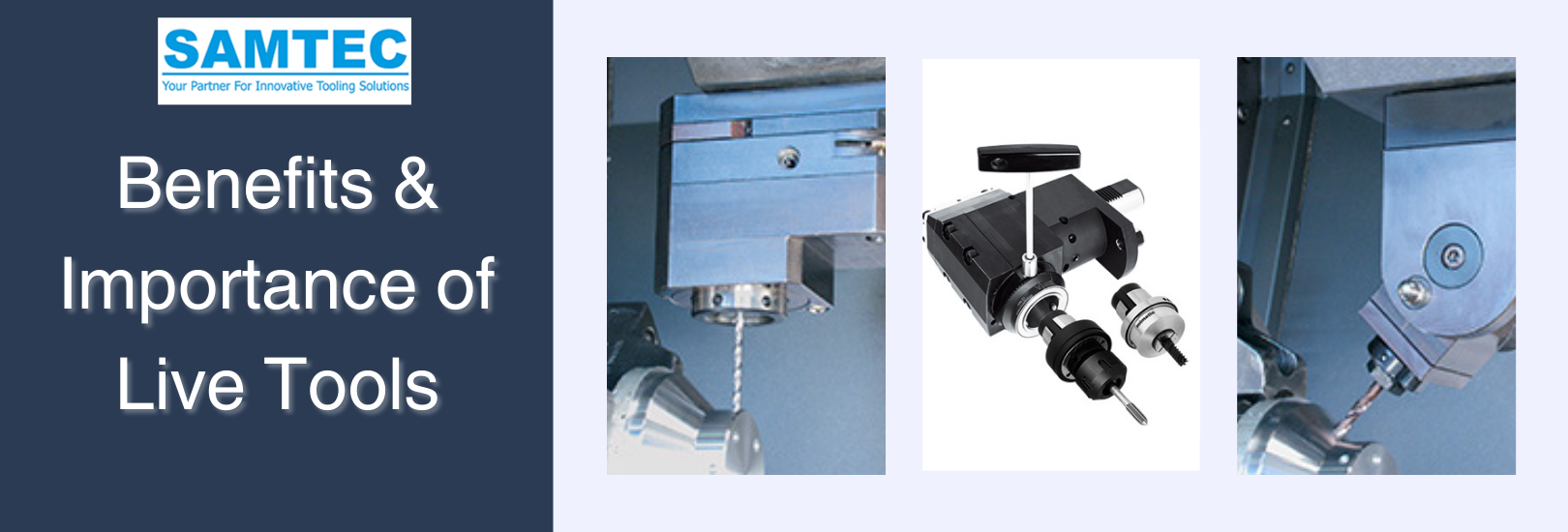
What is Live Tooling??
Live tooling represents a significant advancement in CNC machining, offering manufacturers the ability to perform multiple operations on a workpiece without the need for repositioning or manual tool changes. This technology integrates rotating tools into CNC lathes, allowing them to perform operations such as drilling, milling, and tapping while the workpiece remains stationary. Live tooling has revolutionized the machining industry by increasing efficiency, reducing setup times, and improving overall productivity.
Live tooling represents a significant advancement in CNC machining, offering manufacturers the ability to perform multiple operations on a workpiece without the need for repositioning or manual tool changes. This technology integrates rotating tools into CNC lathes, allowing them to perform operations such as drilling, milling, and tapping while the workpiece remains stationary. Live tooling has revolutionized the machining industry by increasing efficiency, reducing setup times, and improving overall productivity.
Live tooling is compatible with a wide range of materials, including metals, plastics, and composites, making it suitable for a variety of industries such as aerospace, automotive, and medical. The ability to perform multiple operations in a single setup reduces lead times and production costs, making live tooling a cost-effective solution for manufacturers.
Live tooling is compatible with a wide range of materials, including metals, plastics, and composites, making it suitable for a variety of industries such as aerospace, automotive, and medical. The ability to perform multiple operations in a single setup reduces lead times and production costs, making live tooling a cost-effective solution for manufacturers.
Overall, live tooling is a game-changer in the CNC machining industry, offering manufacturers the ability to produce complex parts with speed, precision, and efficiency. Its versatility, compatibility with a wide range of materials, and cost-effective nature make it an essential tool for modern manufacturing operations.
Benefits and Importance of Live Tools in CNC Machining
Enhanced Efficiency and Productivity:
Live tooling allows for the completion of multiple operations in a single setup, reducing idle time and increasing throughput. By eliminating the need for manual tool changes and repositioning of the workpiece, live tooling significantly improves overall efficiency and productivity.
Improved Precision and Accuracy:
Live tooling enables machining operations to be performed with high precision and accuracy. The ability to control the speed, direction, and depth of the tooling allows for complex geometries and tight tolerances to be achieved with ease.
Cost Savings:
While the initial investment in live tooling equipment may be higher, the long-term cost savings are significant. By reducing setup times, minimizing tool changes, and increasing throughput, manufacturers can save on labor costs and improve overall profitability.
Increased Versatility:
Live tooling expands the capabilities of CNC lathes, allowing them to perform a wider range of operations. This versatility is particularly beneficial for small batch production and prototyping, where flexibility is key.
Faster Turnaround Times:
The ability to perform multiple operations in a single setup reduces the time required to manufacture a part. This results in faster turnaround times, enabling manufacturers to meet tight deadlines and customer demands more effectively.
Reduced Tooling Wear:
Live tooling distributes the workload across multiple tools, reducing the wear and tear on individual tools. This extends the lifespan of the tools and reduces the frequency of tool changes, saving time and money.
Enhanced Design Flexibility:
Live tooling allows for the creation of complex geometries and features that would be difficult or impossible to achieve with conventional machining techniques. This flexibility opens up new possibilities for product design and innovation.
Applications of Live Tooling:
Live tooling is a versatile technology that finds applications across a wide range of manufacturing processes. Some of the key applications of live tooling include:
• Milling: Live tooling is commonly used for milling operations, where it can be used to remove material from a rotating workpiece. This process is ideal for creating complex shapes and features on the workpiece, such as pockets, slots, and contours. By using live tooling for milling, manufacturers can achieve high levels of precision and accuracy.
• Boring: Live tooling can also be used for boring operations, where it is used to increase the size and diameter of an existing hole in a workpiece. This process is essential for creating precise and accurate holes, particularly in applications where tight tolerances are required
• Drilling: Live tooling is widely used for drilling operations, where it is used to create cylindrical holes in a workpiece. This process is essential for many manufacturing applications, such as creating holes for fasteners or creating holes for fluid flow in hydraulic or pneumatic systems.
• Turning: Live tooling can be used for turning operations, where it is used to remove material from the external diameter of a rotating workpiece. This process is essential for creating precise and accurate cylindrical shapes, such as shafts or pins.
Summary
In conclusion, live tooling is a crucial advancement in CNC machining, offering manufacturers the ability to perform multiple operations with precision and efficiency. SAMTEC provides high-quality live tools designed for machines like Mazak, DMG-Mori, Okuma, Emag, Haas, and machines with Sauter turret. These live tools feature a modular quick-change system that reduces the investment required for basic holders and saves tool pockets on the turret, minimizing machine downtime. SAMTEC also offers special live tools with cutting tools as a complete solution, further enhancing efficiency and productivity in machining operations. With SAMTEC's live tools, manufacturers can achieve superior machining performance and optimize their production processes.
Copyright © 2025 Samtectools
Best viewed in IE 10+, Firefox 20+, Chrome , Safari5+, Opera12+